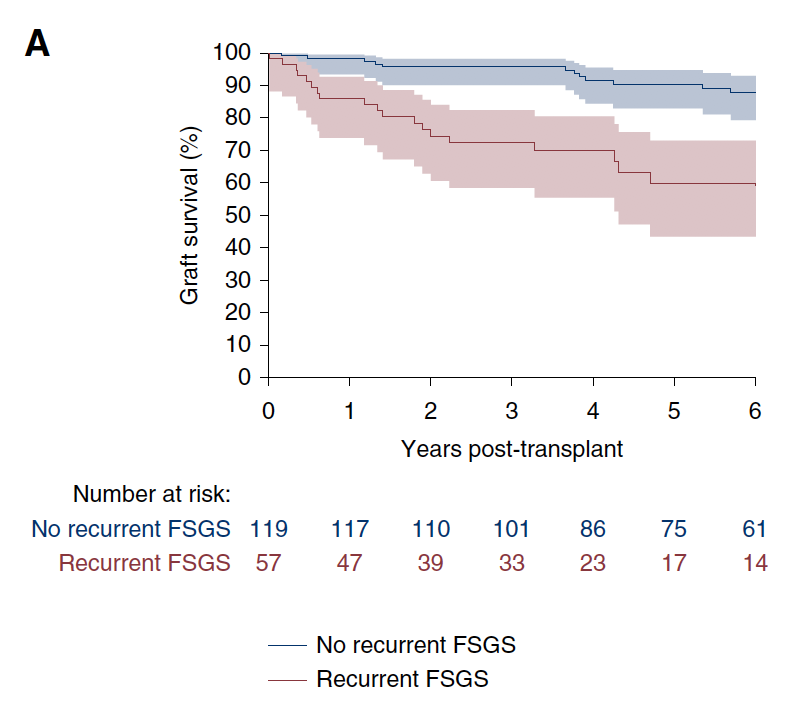Clin J Am Soc Nephrol. 2020 Feb 7;15(2):247-256.
Authors
Uffing A, Pérez-Sáez MJ, Mazzali M, Manfro RC, Bauer AC, de Sottomaior Drumond F, O’Shaughnessy MM, Cheng XS, Chin KK, Ventura CG, Agena F, David-Neto E, Mansur JB, Kirsztajn GM, Tedesco-Silva H Jr, Neto GMV, Arias-Cabrales C, Buxeda A, Bugnazet M, Jouve T, Malvezzi P, Akalin E, Alani O, Agrawal N, La Manna G, Comai G, Bini C, Muhsin SA, Riella MC, Hokazono SR, Farouk SS, Haverly M, Mothi SS, Berger SP, Cravedi P, Riella LV.
Abstract
BACKGROUND AND OBJECTIVES:
FSGS recurrence after kidney transplantation is a major risk factor for graft loss. However, the natural history, clinical predictors, and response to treatment remain unclear because of small sample sizes and poor generalizability of single-center studies, and disease misclassification in registry-based studies. We therefore aimed to determine the incidence, predictors, and treatment response of recurrent FSGS in a large cohort of kidney transplant recipients.
DESIGN, SETTING, PARTICIPANTS, & MEASUREMENTS:
The Post-Transplant Glomerular Disease (TANGO) project is an observational, multicenter, international cohort study that aims to investigate glomerular disease recurrence post-transplantation. Transplant recipients were screened for the diagnosis of idiopathic FSGS between 2005 and 2015 and details were recorded about the transplant, clinical outcomes, treatments, and other risk factors.
RESULTS:
Among 11,742 kidney transplant recipients screened for FSGS, 176 had a diagnosis of idiopathic FSGS and were included. FSGS recurred in 57 patients (32%; 95% confidence interval [95% CI], 25% to 39%) and 39% of them lost their graft over a median of 5 (interquartile range, 3.0-8.1) years. Multivariable Cox regression revealed a higher risk for recurrence with older age at native kidney disease onset (hazard ratio [HR], 1.37 per decade; 95% CI, 1.09 to 1.56). Other predictors were white race (HR, 2.14; 95% CI, 1.08 to 4.22), body mass index at transplant (HR, 0.89 per kg/m2; 95% CI, 0.83 to 0.95), and native kidney nephrectomies (HR, 2.76; 95% CI, 1.16 to 6.57). Plasmapheresis and rituximab were the most frequent treatments (81%). Partial or complete remission occurred in 57% of patients and was associated with better graft survival.
CONCLUSIONS:
Idiopathic FSGS recurs post-transplant in one third of cases and is associated with a five-fold higher risk of graft loss. Response to treatment is associated with significantly better outcomes but is achieved in only half of the cases.
Figure. Recurrence of FSGS is associated with reduced graft survival, especially in patients with no response to treatment. (A) Kaplan–Meier graft survival curve comparing patients with and without recurrent FSGS post kidney transplantation.

